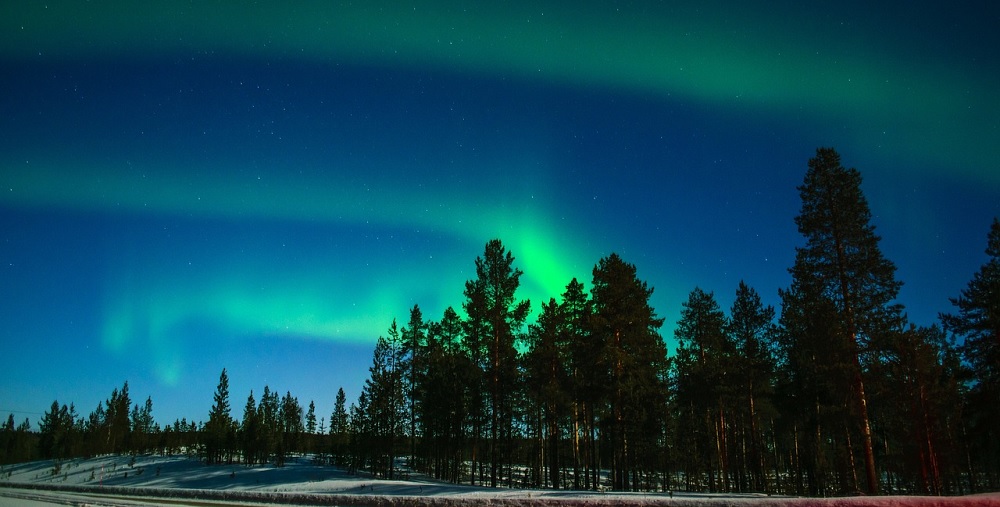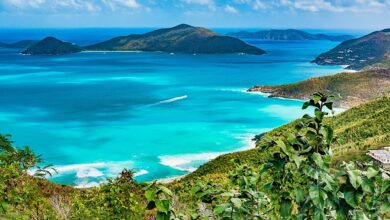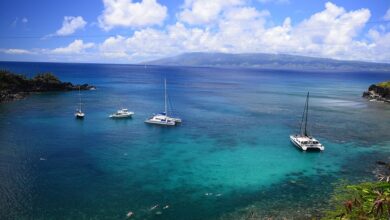
The northern lights or Aurora Borealis are probably on more bucket lists than any other natural phenomenon. They are caused by the interaction of charged particles from the sun with the earth’s magnetic field, creating colorful ribbons of light that dance across the night sky.
So where can you see the northern lights? In this guide, we’ll answer all these questions and more, so you can plan your perfect trip to see the northern lights.
Where to See the Northern Lights
The best place to view the northern lights in in the Arctic Circle. This includes the northern part of Canada, Alaska, Greenland, Iceland, Norway, Sweden, Finland, and Russia.
Of course there some places that better than others for seeing the northern lights. Also factors such as weather, light pollution, and accessibility will affect visibility..
Best Places to See the Northern Lights
Tromsø, Norway: Maybe the best known city is Tromso, sometimes called the “capital of the northern lights”. This is because it is located in the middle of the auroral oval giving you a really good chance of seeing the northern lights almost every night. Tromsø also offers a variety of activities and attractions, such as dog sledding, whale watching and visiting the Polar Museum. See our tour reviews of northern lights tours in Norway.
Reykjavik, Iceland: Iceland is perhaps the second-best destination for seeing the northern lights. You may know it for its stunning landscapes, geothermal pools, and friendly culture. There are many tours that leave from Reykjavik that can take you to the remote locations where you can see the Northern Lights. See our reviews of Iceland northern lights tours.
Fairbanks, Alaska: Alaska is another prime location for seeing the northern lights, as it has a long and dark winter season that provides optimal conditions for aurora viewing. Fairbanks is a convenient and comfortable city that offers many options for seeing the northern lights, such as staying in a cozy cabin or taking a train ride through the wilderness. See our reviews of Fairbanks northern lights tours.
Abisko, Sweden: Certainly not as well-known as other places to see the Northern Lights the small village in northern Sweden that is surrounded by mountains and lakes. It is also home to the Abisko National Park and the Aurora Sky Station, which are both ideal places for seeing the northern lights. Abisko has a unique microclimate that creates clear skies and low humidity, which enhance the visibility of the aurora.
Yellowknife, Canada: Other than a few areas in Alaska it’s one the best places to see the northern lights in North America. It is located under the auroral oval and has over 240 nights of aurora activity per year. Yellowknife also has a vibrant culture and history that you can explore during your stay. See our reviews of Yellowknife northern lights tours.
Best Time to See the Northern Lights
While you can see northern lights year-round, you are more likely to see them in the winter. The nights are longer and darker, so you have a better shot at seeing them. The best time of day to see them is between 10 pm and 2 am. The northern lights are the brightest at this time off night giving you the best chance of seeing them.
However, seeing the northern lights also depends on other factors such as weather and solar activity. The weather is unpredictable and cloudy in many areas, which will interfere seeing the aurora.
Solar activity refers to how active the sun is in emitting charged particles that cause the aurora. Solar activity follows an 11-year cycle that peaks every 11 years. The next peak is expected in 2025.
Best Way to See the Northern Lights
There are many ways to see the northern lights depending on your preferences and budget. You can join a guided tour or excursion that will take you to a prime location for seeing the aurora.
Booking a hotel that has a view of the night sky or has special facilities like glass ceilings or domes is a good option. You can rent a car or camper and drive around on your own to find a viewing location away from light pollution.
However you decide to do it, make sure you dress warmly and bring some snacks and drinks while you wait for the aurora to appear. It may take a while! Checking the weather forecast before you go can save you a lot of time.
Tips on Photographing the Northern Lights
Use a tripod: A tripod will help you stabilize your camera or phone and avoid blurry photos due to camera shake.
Use manual mode: Manual mode allows you to adjust your settings such as aperture, shutter speed, ISO and focus giving the best chance at getting a great photo.
Use a wide-angle lens: A wide-angle lens will give more coverage of the sky
Use a remote shutter release or timer: A remote shutter release or timer will help you avoid touching your camera or phone when taking photos so you don’t shake the camera.
Experiment with different settings: There is no best setting for photographing the northern lights because they vary in brightness, color and movement. You will need to try different settings to see what works best.



